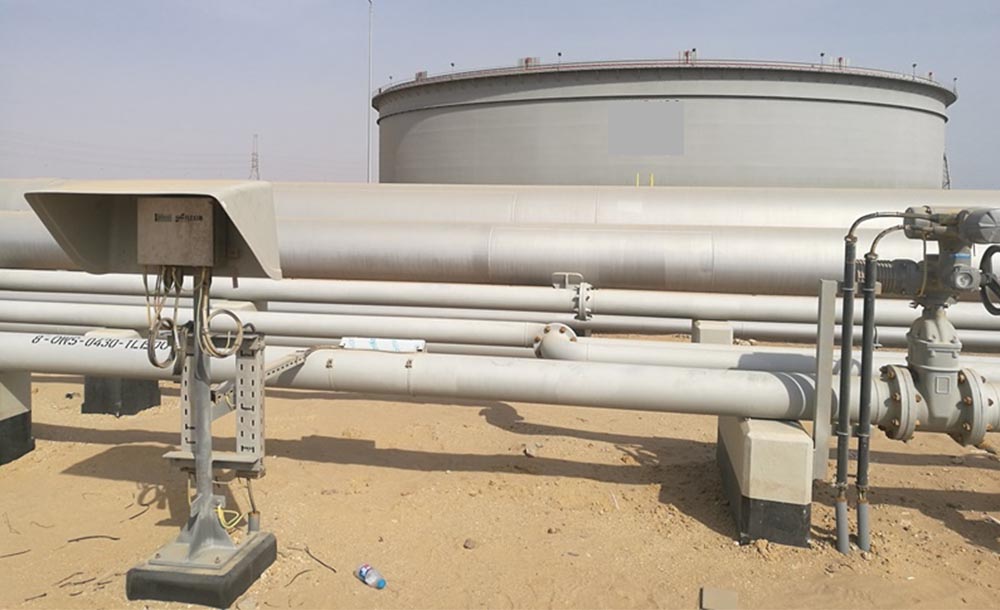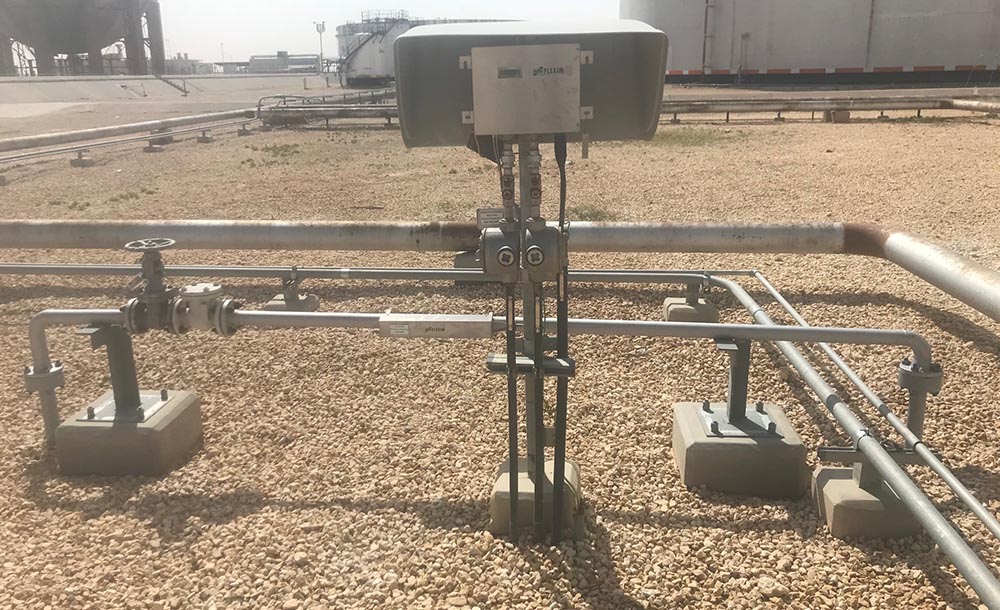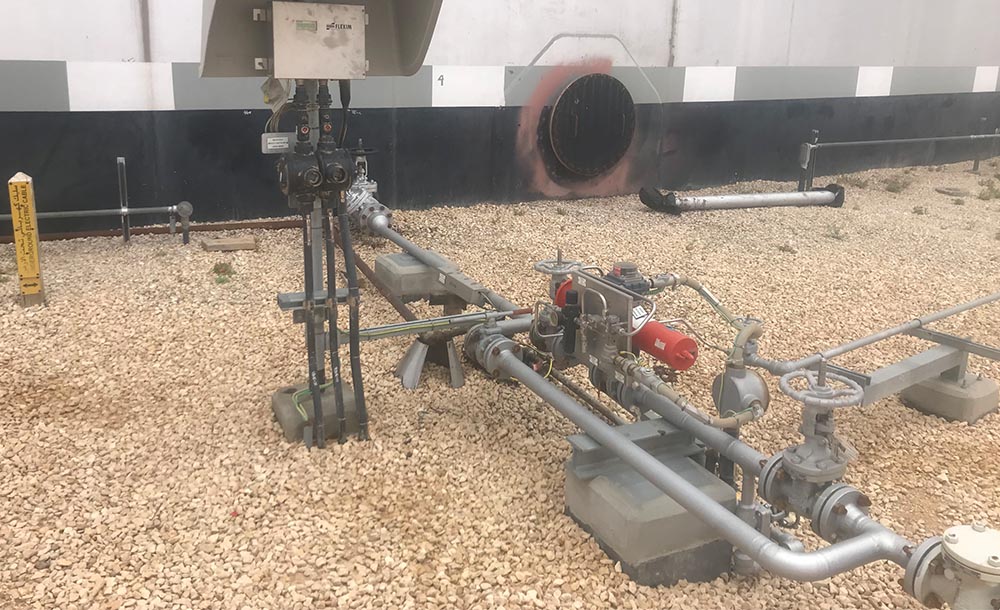The presence of water in refined product storage tanks is a natural phenomenon. Failure to remove the free water from the tank bottom on a regular basis can result in the corrosion of the tank and the decomposition of the hydrocarbon through bacterial activity, both should be avoided. Furthermore, if water levels are not controlled there is a danger of water being drawn into the process, in preference to hydrocarbon, causing damage and disruption.
The traditional method of dealing with accumulated water is by periodic, manual draining which requires an operator to open a valve to release the water to drain and then close it again when hydrocarbon is present. This can result in excessive loss of hydrocarbon from the system which is undesirable. The use of automated techniques is preferred from safety, environmental and economic points of view.


Existing technology design to automate the process required modification to the storage tank to facilitate the installation of sensor probes. This was often impractical and always expensive. The technology itself was also very expensive. The probes also suffered from fouling which compromised successful operation of the system.
Working with Saudi Aramco, SAFIA took up the challenge to identify and evaluate a non-intrusive, low cost solution to this challenge. Using their experience with clamp-on ultrasonic technology for flow metering, SAFIA recognised that this same device could be used to detect the presence of the water/oil interface by measuring the “speed of sound” of the liquid in the tank drain. Passage of the interface would then be used to automatically stop the dewatering process, removing the “human” element in the procedure. Because the sensors are “clamp-on” they do not come into contact with the oil in the pipe and can be installed on existing pipe work without any interruption to the operation.
The technique underwent extensive evaluation at Saudi Aramco’s Riyadh Refinery, resulting in the award of a global patent in July 2015. Saudi Aramco awarded an exclusive license to SAFIA for the use and distribution of the patented technology.


